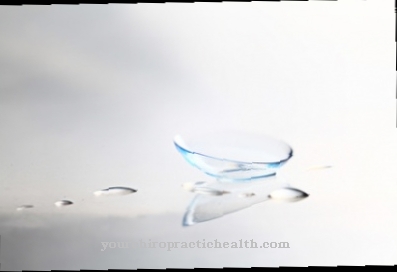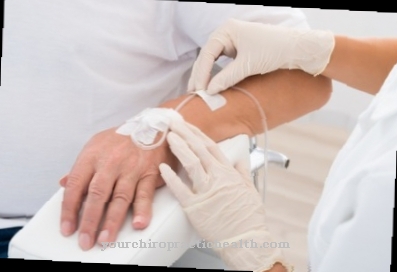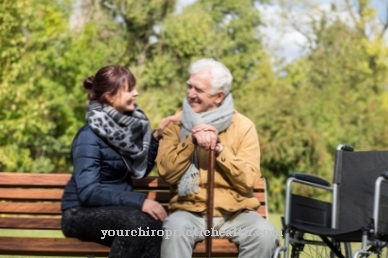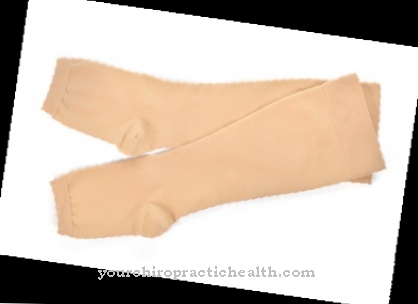The application with the medical brush is a form of traditional naturopathy. Applied dry or wet, medical brushes can stimulate general detoxification and strengthen the immune system. The beneficial effect is mainly due to the increase in blood circulation in the skin.
What is a medical brush?

Brushes for medical use are available in various designs from specialist shops. Depending on your personal skin sensitivity or the intended use, a natural brush or a synthetic brush can be useful.
Natural brushes are usually recommended because of the empirically traditional healing properties. The founder of modern hydrotherapy, Pastor Sebastian Kneipp, for example, attached great importance to the fact that only natural brushes should be used to brush the skin. The handle style of a brush can be wood or hard plastic.
The shape, size and length of a brush are also important for correct medical use. Special brushes have a particularly long and removable style so that almost all areas of the skin, including those of the back or extremities, can be reached on their own. Synthetic brushes are often perceived as too hard on the skin by many people; such designs could injure the skin if they are used improperly or by mistake.
First, the use of a so-called large knob brush is recommended, then a dry brush can be used and only then should you take a short shower. At the end of the application, you can rework with a wet brush and then apply a peeling gel to the skin.
Shapes, types & types
Dry brush massages can be performed with the classic horse hair dry brush. With a high-quality dry brush, the brush hairs in the brush head are wired inside the wood in order to guarantee the greatest possible stability and durability. Models of dry brushes in which the brush hairs are only glued to the brush head are considered to be far less durable, because the brush hairs fall out over time. In addition, brushes that have been declared by the manufacturer as dry brushes must not be made wet, because the moist environment causes the material to soften and therefore its function to be restricted.
Wet brushes are also expressly approved for use in contact with water. These are mostly plastic or metal brushes that are completely insensitive to water. This type of brush can also be used in the shower or bath without risk. Kneipp's round brushes do not have a handle, but are attached directly to the hand. Not all areas of the body can be brushed independently, as is the case with a long-handled brush.
Whole body brushing, whether dry or wet, can be performed by your partner or a therapist in the prone or supine position. The individual skin sensitivity of the person to be treated must be taken into account.
Structure & functionality
The construction of all medical brushes is similar in shape and shape. However, there are variations in the material or hardness of the bristles. Natural bristles are usually softer than those made of plastic or plastic. Which variant is preferred is not least a question of the indication and personal taste. In addition, industrially manufactured plastic brushes are much cheaper to buy than a natural hair bust made by hand with a long wooden handle.
Dealing with brushes as a medical product is part of the wellness area. And as wellness products, brushes can always be used on their own, because no risks or side effects are known when used as intended.
The main function of all types of brushes is to increase the blood circulation in the skin in order to improve vitality, immune defense and general well-being over the long term. It can be brushed up to twice a day. Once in the morning with the dry brush before showering to increase the elasticity of the skin and once in the evening about 1 to 2 hours before going to bed. After all, according to Kneipp, dry brush massages not only stimulate the metabolism, but also help promote healthy sleep when used in the evenings. To brush properly, you should always start with the lower extremities, i.e. the feet. From there, the brush moves in a gentle, circular motion towards the heart.
You can find your medication here
➔ Medicines against redness and eczemaHealth benefits
When using a brush, it is important not just to rub back and forth, but rather to pull the brush along the skin in long, wiping strips. However, the application must not be too intensive, otherwise the skin will quickly become reddened, irritated or even injured. Ultimately, the application is all about stimulating blood circulation in the skin.
The abdominal region can also be brushed as part of a gentle intestinal massage. It is best to brush counterclockwise here. When doing a brush massage of the back, upward movements have proven successful. Hands, arms and the chest area are only brushed at the very end.
With dry brushing, it is essential to ensure that the brush and skin really stay dry during a session. Nevertheless, you should take a short shower even after a dry brushing. This will wash away dead skin cells and toxins.
Brush applications for cellulite, to maintain a youthful complexion, to improve muscle tone and to tighten sagging skin areas are of cosmetic interest. Since the use of brushes acts like a peeling, skin care products are also absorbed much better afterwards.

























.jpg)


